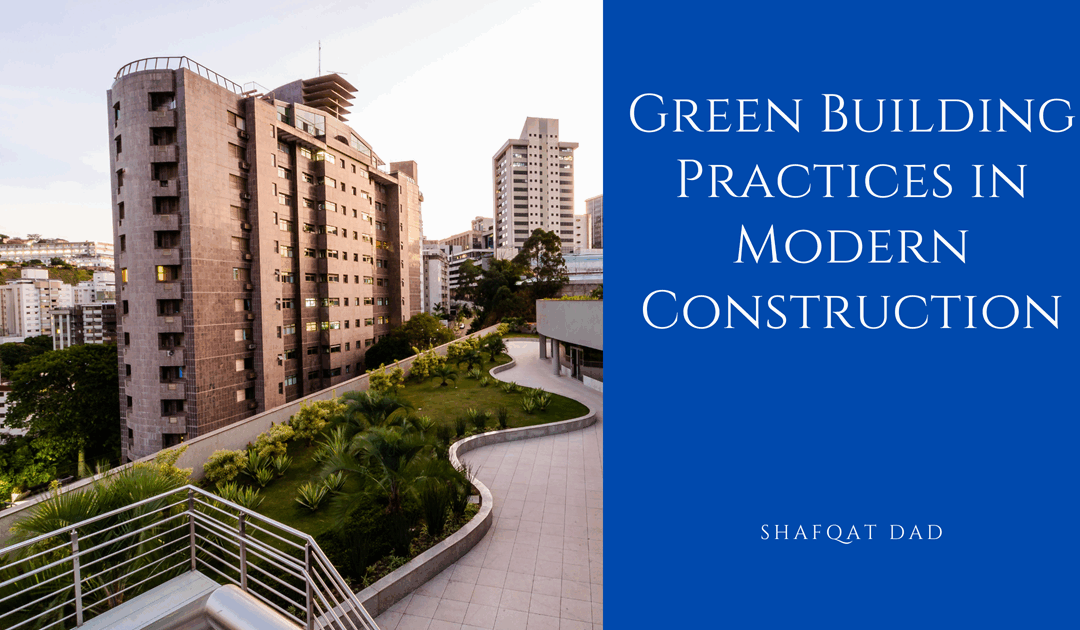In today’s construction landscape, sustainability is more than a buzzword—it’s a necessity. As climate change and environmental concerns continue to shape public policy and consumer preferences, the construction industry is embracing green building practices as part of a long-term solution. These practices not only reduce a building’s environmental impact but also lead to cost savings, improved occupant health, and increased property value.
Green building refers to the design, construction, and operation of buildings in a resource-efficient, environmentally responsible manner. The goal is to minimize the use of energy, water, and other resources while maximizing the health and comfort of occupants. This involves everything from selecting sustainable materials to implementing energy-efficient systems and using design strategies that harmonize with the natural environment.
One of the most prominent elements of green building is energy efficiency. Buildings consume a significant portion of the world’s energy supply, and reducing that consumption is a top priority for sustainable construction. Energy-efficient buildings use advanced insulation, high-performance windows, and smart HVAC systems to lower energy use. Incorporating solar panels, wind turbines, and other renewable energy sources into construction projects is also becoming increasingly common, allowing buildings to produce some or all of their own power.
Water conservation is another key principle. Low-flow fixtures, dual-flush toilets, and water-efficient landscaping help reduce water use without sacrificing functionality. Greywater systems that recycle used water for irrigation or toilet flushing are gaining traction, especially in areas where water scarcity is a growing concern. Rainwater harvesting systems are also being integrated into building designs to capture and reuse precipitation for non-potable needs.
Material selection plays a critical role in sustainable construction. Green builders prioritize locally sourced, recycled, and renewable materials whenever possible. Using materials such as bamboo, reclaimed wood, recycled steel, and low-VOC (volatile organic compound) paints can significantly reduce a project’s environmental footprint. Additionally, materials that are durable and require minimal maintenance contribute to a longer building lifespan and reduced resource use over time.
Green design goes beyond materials and systems—it also includes thoughtful architectural strategies. Designing buildings to maximize natural light and ventilation can reduce reliance on artificial lighting and climate control. Orienting structures to take advantage of passive solar heating and cooling, using overhangs for shade, and incorporating green roofs or living walls are all ways to enhance sustainability while improving aesthetics and comfort.
Waste reduction is also fundamental. During construction, careful planning can minimize excess materials and allow for better recycling and reuse. Some builders implement modular or prefabricated construction methods, which generate less waste and reduce onsite disruptions. Proper construction waste management reduces landfill use and supports a circular economy within the building industry.
Green buildings benefit not just the environment but also the people who live and work in them. Better indoor air quality, access to natural light, and thermal comfort can improve occupant health, productivity, and well-being. As a result, green buildings often experience lower vacancy rates and higher tenant satisfaction, which translates to increased marketability and long-term value for developers and property owners.
Certifications like LEED (Leadership in Energy and Environmental Design), BREEAM (Building Research Establishment Environmental Assessment Method), and WELL provide frameworks and benchmarks for sustainable building practices. These certifications help guide architects, builders, and owners in creating buildings that meet rigorous environmental standards and encourage innovation in sustainability.
Governments and municipalities around the world are increasingly supporting green construction through incentives, tax breaks, and updated building codes. These policies help make sustainable building practices more accessible and cost-effective, further driving industry adoption. In many areas, green building compliance is no longer optional—it’s a requirement.
While upfront costs for green building techniques and materials can be slightly higher, the long-term savings often outweigh the initial investment. Energy and water efficiency lead to lower utility bills, while improved durability reduces maintenance and replacement costs. Additionally, properties with green certifications often command higher resale and rental values.
As the global population grows and urbanization increases, the need for sustainable, high-performance buildings will only intensify. Green building practices represent the future of construction—an intersection of innovation, responsibility, and resilience. By embracing sustainable methods today, builders and developers are laying the foundation for healthier communities and a more sustainable planet tomorrow.

